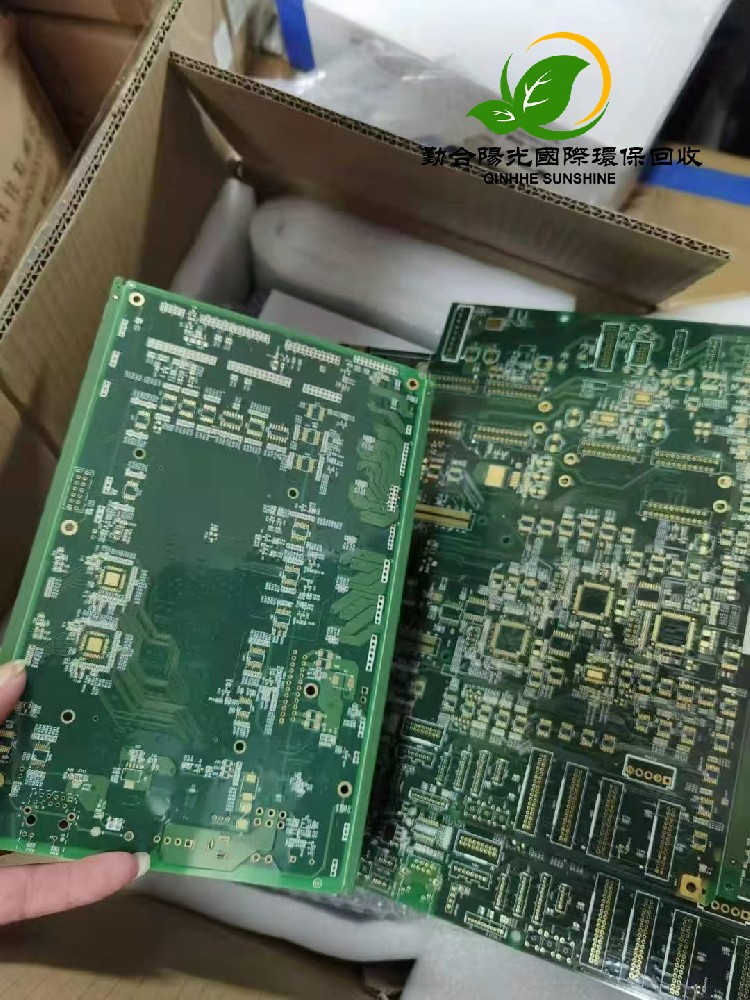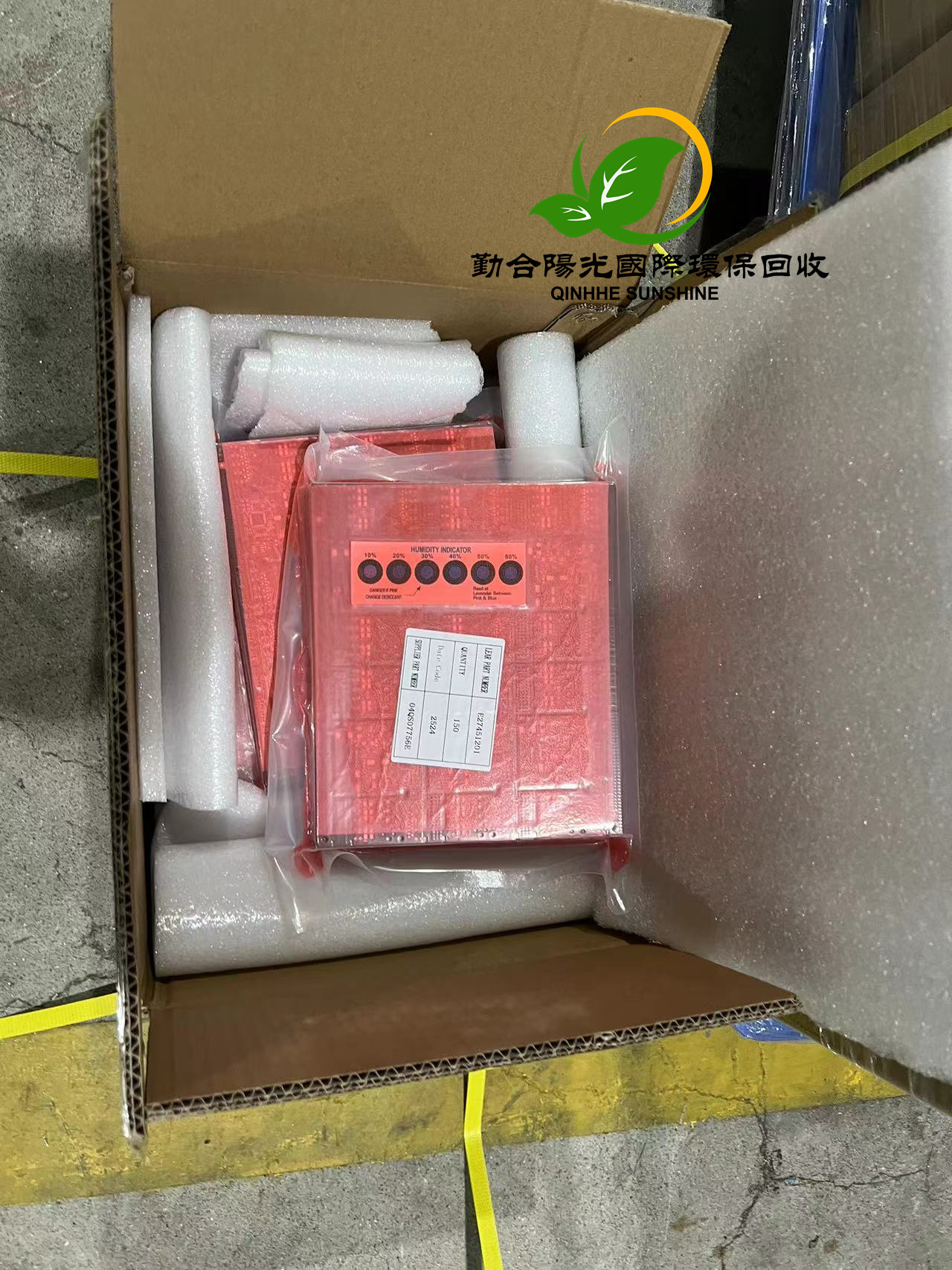Recycling of old circuit boards has multiple uses, mainly including the following aspects
1. Resource Recycling
Circuit boards contain precious metals (such as gold, silver, and palladium) as well as metals like copper and aluminum. After recycling, they can be reused in industrial production, reducing the dependence on natural resources.
2. Environmental Protection
Hazardous substances in circuit boards (such as lead, mercury, and cadmium) can pollute the environment if not properly handled. Recycling can effectively reduce the harm of these substances to soil and water sources.
3. Economic Benefits
The recycling of precious metals has high economic value, which can bring profits to recycling enterprises and at the same time reduce the production cost of new materials.
4. Energy Conservation
Recycling metals consumes less energy than mining and refining new metals, helping to reduce carbon emissions and promote sustainable development.
5. Technological Innovation
The recycling process promotes the development of environmental protection technologies, such as more efficient metal extraction and hazardous substance treatment technologies.
6. Reduction of Waste
Recycling reduces the accumulation of electronic waste and alleviates the pressure on landfills.
7. Social Responsibility
Recycling helps to promote the circular economy, reduce resource waste, and conforms to the social responsibility of sustainable development.
In conclusion, the recycling of old circuit boards not only protects the environment but also brings economic and social benefits.
Yes, old circuit boards can be refined to extract gold. The gold-plated layers, connectors, and certain electronic components in circuit boards contain a small amount of gold. The following are the main steps for extracting gold:
1. Disassembly and Classification
First, disassemble the circuit board and separate the components containing gold, such as connectors and slots.
2. Crushing and Grinding
Crush the gold-containing components into small pieces to facilitate subsequent chemical treatment.
3. Chemical Dissolution
Use solvents such as aqua regia (a mixture of hydrochloric acid and nitric acid) to dissolve the gold and convert it into a liquid state.
4. Filtration and Separation
Filter the solution to remove insoluble impurities, leaving behind the gold-containing solution.
5. Gold Reduction
Reduce the gold ions in the solution to solid gold through chemical reduction (such as using sodium sulfite).
6. Refining and Purification
Further refine the gold to remove impurities and obtain high-purity gold.
Precautions
• Safety: Chemical solvents are highly corrosive and toxic. When operating, wear protective equipment and carry out the operation in a well-ventilated environment.
• Environmental Protection: Waste liquids and residues need to be properly treated to avoid environmental pollution.
• Economy: The cost of refining gold is relatively high, and it is necessary to ensure that the recycling volume is large enough to cover the cost.
In conclusion, gold can be extracted from old circuit boards, but the process is complex and attention needs to be paid to safety and environmental protection issues.
Obsolete Electronic Components: The Neglected "Urban Ore" and Green Opportunities
In today's era of rapid iteration of electronic products, obsolete electronic components have become an environmental and economic issue that cannot be ignored. According to statistics, the global annual production of obsolete electronic components due to product upgrades exceeds 500,000 tons, which contain rare metals and high-quality materials worth tens of billions of dollars. These electronic components labeled as "obsolete" are often treated as ordinary waste, causing huge resource waste and environmental pollution. Building an environmental protection recycling system for obsolete electronic components is not only related to environmental protection but also an important way to achieve resource recycling.
Recycling and Treatment of Obsolete Electronic Components
I. Environmental Challenges and Resource Value of Obsolete Electronic Components
Obsolete electronic components contain a large amount of precious metals and rare materials. Taking a common PCB board as an example, each ton contains approximately 200 grams of gold, 1,000 grams of silver, and 80 kilograms of copper, and its metal content far exceeds that of primary ores. If these materials are not effectively recycled, it will cause huge resource waste.
Currently, there are serious problems in the treatment methods of obsolete electronic components. Many enterprises directly landfill or incinerate the obsolete materials, resulting in heavy metal pollution and toxic gas emissions. Informal recycling channels use backward processes such as acid washing to extract precious metals, causing serious secondary pollution.
Establishing an environmental protection recycling system is of great importance and urgency. This is not only related to environmental protection but also the key to alleviating resource shortages and realizing the circular economy. Through standardized recycling, obsolete electronic components can be transformed into valuable secondary resources.
II. Technological Innovation in the Recycling of Obsolete Electronic Components
In terms of physical recycling technology, breakthroughs are being made in precision disassembly and classification technology. Through technologies such as laser cutting and robotic arm disassembly, the non-destructive separation of electronic components can be achieved. Advanced image recognition technology can automatically identify and classify different models of components.
Chemical recycling technology is also constantly innovating. New environmentally friendly solvents can safely dissolve the packaging materials without damaging the internal metals. Supercritical fluid technology can achieve the clean separation of plastics and metals. Biological metallurgy technology uses specific microorganisms to extract precious metals, which has the advantages of environmental protection and low energy consumption.
Intelligent recycling systems are changing the traditional recycling model. Through the Internet of Things technology, the whole process traceability and intelligent scheduling of obsolete materials can be realized. Artificial intelligence algorithms can optimize the disassembly process and improve recycling efficiency. Digital twin technology can simulate and optimize the entire recycling process.
III. Building an Industrial Ecology for the Recycling of Obsolete Electronic Components
Policy support and standard formulation are the foundation for industrial development. Special regulations for the recycling of obsolete electronic components need to be formulated to clarify the responsibilities of all parties. Establish a recycling and treatment standard system to standardize the recycling process and technical requirements.
The improvement of the recycling industry chain requires the cooperation of multiple parties. From component collection, transportation to processing, a complete industry chain needs to be established. The "Internet + recycling" platform can connect the supply and demand sides and improve recycling efficiency. Professional recycling enterprises need to establish a cooperation mechanism with component manufacturing enterprises.
Establishing a sustainable business model is the key. Value can be created through various means such as component remanufacturing, material recycling, and data services. Establish a trading platform for obsolete components to promote the reuse of components. Develop financial services for component recycling to provide financial support for recycling enterprises.
The recycling of obsolete electronic components is a systematic project that requires the coordinated promotion of technological innovation, institutional improvement, and business model innovation. By building a complete recycling system, we can transform obsolete electronic components from an environmental burden into valuable resources, providing new solutions for the sustainable development of the electronics industry. This is not only an environmental protection cause but also an emerging industry full of opportunities. Let us work together to build a green recycling ecosystem, so that every obsolete electronic component can find a new value destination and contribute to the sustainable development of the earth.
我的WhatsApp:69536972-郵箱:martin.hyq88@gmail.com


 繁體中文
繁體中文 简体中文
简体中文 English
English




 咨询热线
咨询热线 公司邮箱
公司邮箱 地址导航
地址导航

